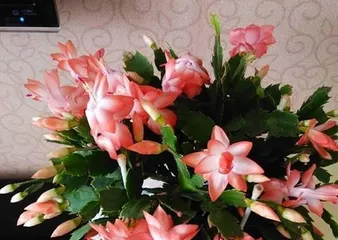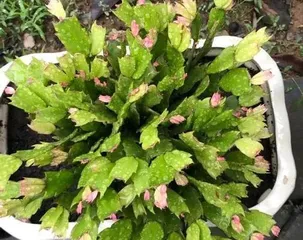Christmas cactus is a common ornamental plant, loved for its beautiful flowers and unique leaf shape. However, many people encounter difficulties when caring for Christmas cactus, not knowing how to make it grow healthily and bloom frequently. This article will provide you with a detailed introduction to the care methods for Christmas cactus, allowing you to easily maintain it to be graceful and full of flowers.

I. Suitable Time and Place for Planting
If you are growing Christmas cactus indoors, the best time is in spring or autumn. For outdoor planting, you can choose according to the local climate. Christmas cactus needs sufficient sunlight and air circulation, so the planting location should be a sunny, well-ventilated place.
II. Soil Types and Ratios
Christmas cactus likes loose soil. When buying soil, you should choose a nutrient-rich soil that is loose, breathable, and well-draining, and you can add an appropriate amount of well-rotted organic fertilizer. Soil ratios can include peat, perlite, coral sand, etc.

III. Water Management
Christmas cactus needs moderate water; too much or too little will adversely affect its growth. During the growing period, the soil should be kept slightly moist but not overly wet. The frequency of watering can be reduced during the winter dormant period.
IV. Fertilization Time and Method
Christmas cactus needs sufficient nutrients during its growing period, so regular fertilization is required. During the growing season, you can use diluted liquid fertilizer every 2-3 weeks, spraying it on the leaves.
V. Pruning
The inflorescence of Christmas cactus is spike-like. After the flowers bloom, you can prune as needed to make it more beautiful and tidy. In addition, you need to regularly prune withered leaves and branches, and those affected by pests.

VI. Temperature Control
Christmas cactus needs a warm environment to grow. The suitable growing temperature is 20-30°C, with a winter minimum of not less than 10°C. During the winter dormant period, the temperature should be controlled at around 10-15°C.
VII. Avoiding Water on Leaves
The leaves of Christmas cactus are relatively wide. Water on the leaf surface will adversely affect its growth, so watering on the leaves should be avoided.
VIII. Pest and Disease Control
Christmas cactus is susceptible to fungal diseases and pests such as aphids. Regular disinfection and spraying of insecticides can effectively prevent the occurrence of pests and diseases.
IX. Environmental Humidity Control
Christmas cactus has high requirements for humidity. Controlling the environmental humidity above 60% can promote its growth and development.
X. Repotting and Changing Soil
Christmas cactus can be repotted and have its soil changed once every spring or autumn. Completely removing the old soil and replacing it with new soil can promote its growth.
XI. Leaf Color and Shape
The leaves of Christmas cactus are bright green, and their shape resembles crab claws, which is quite aesthetically pleasing. If the leaves turn yellow, wither, or show other signs of distress, they need to be dealt with promptly.
XII. Flowering Period and Flower Colors
The flowering period of Christmas cactus is from spring to autumn. During this time, it can produce many flowers, which are mostly white, pink, yellow, etc.
XIII. Other Precautions
During the growth process of Christmas cactus, it is also necessary to pay attention to maintaining good ventilation, avoiding direct sunlight, and preventing leaf damage to help it grow healthily.
XIV. Introduction to Other Varieties
In addition to the common varieties of Christmas cactus, there are also many mutant varieties, such as red-leaf Christmas cactus and color-changing Christmas cactus, each with its own unique characteristics.
XV
Christmas cactus is a beautiful ornamental plant, but its care also requires attention to many details. Only by providing proper care can it grow healthily and be full of flowers. I hope this article can provide you with useful care suggestions for your Christmas cactus to grow healthily.